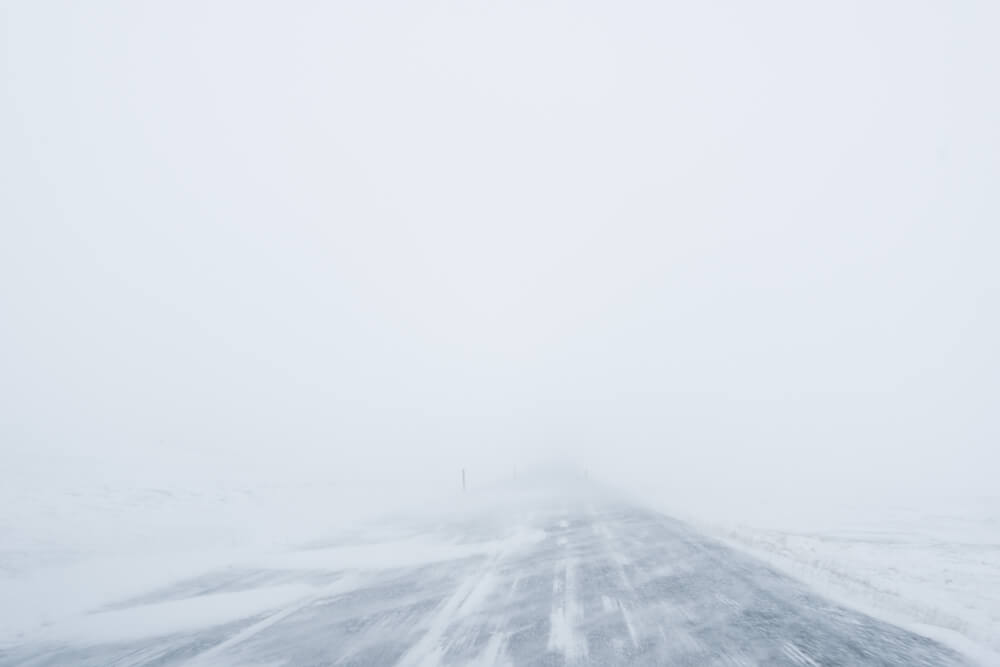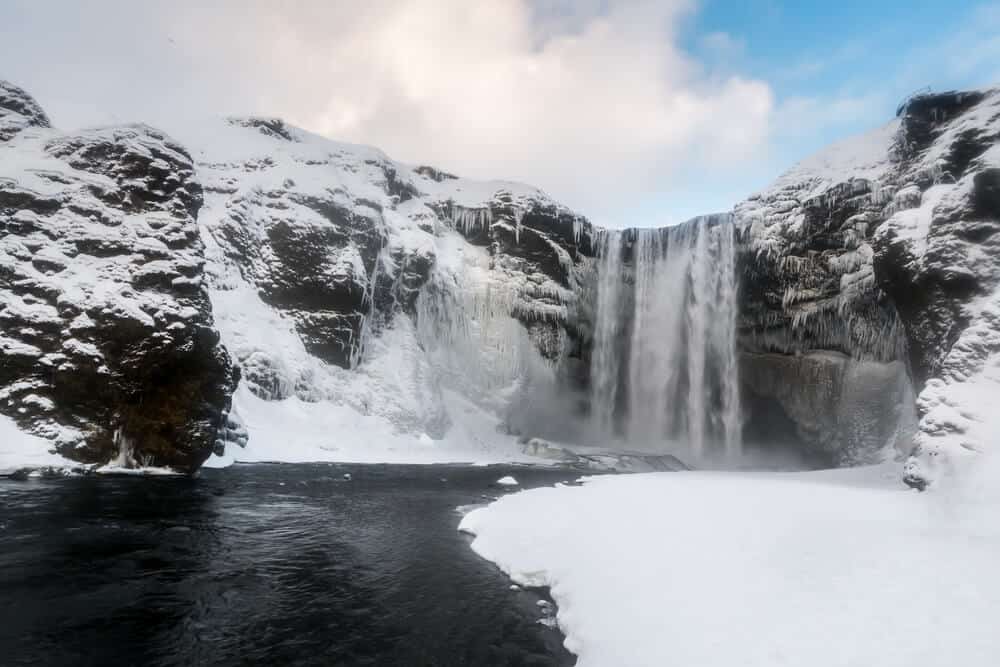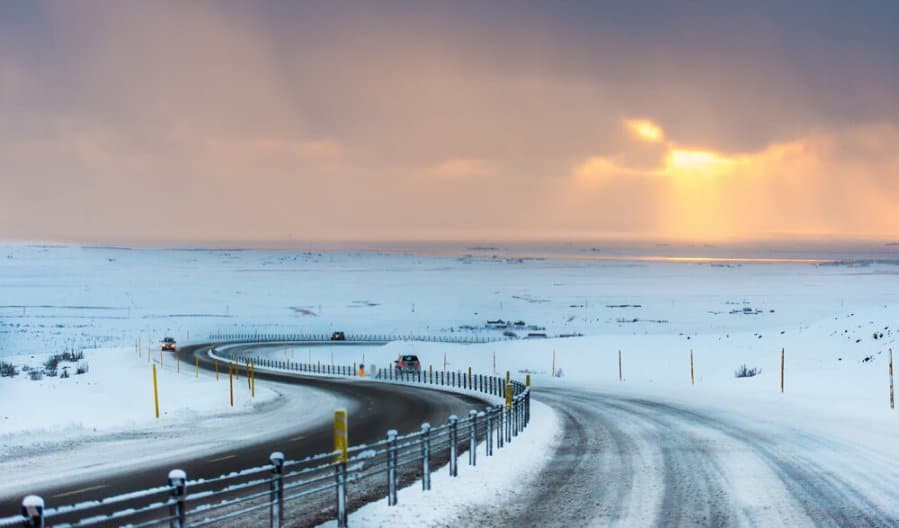Taking a vacation to Iceland in winter is something that more and more travelers are doing. And can you really blame them? With low prices on car rental and hotel as well as cool outdoor activities like hiking on Vatnajökull glacier, It’s no wonder that tourists flock here during the winter months of November through March. But people who come here during this time need to keep conditions on the road and the weather in mind. I’ve got some winter driving tips for Iceland that I think are very important to know. Nothing is more important than safety, and taking precautions just may save your life. I know that’s not something people typically want to hear when planning their vacation. But I would be doing you a disservice if I didn’t mention this fact.

Is Driving in Iceland Scary or Dangerous?
If you are a smart, careful driver, then the answer is no. The roads are well taken care of and are quite smooth. Black ice and low visibility are winter driving dangers no matter where you go. In order to avoid becoming a cautionary tale, just use good sense. Necessary precautions like snow tires will already be taken care of by the rental company. Another driving tip is that it’s also advisable to rent a 4-wheel drive vehicle. It’s up to you to do the other things that will ensure a safe passage and help you arrive in one piece.
Check the Weather Forecast
I know this is not the most exciting travel tip that has ever been written in the history of travel blogs. And I’m perfectly fine with that. Because much like eating your vegetables, this is a really good thing for you to do, so I’m telling you to do it. The reason I say this is because the weather in Iceland is unlike anything you have ever experienced before. This is not an exaggeration. My small, beautiful Island has endured everything from category five hurricane-force winds to freak snowstorms in June. So when I say Iceland’s weather is unpredictable and you never know what awaits you, I’m not just using hyperbole. Always expect the unexpected and Iceland and you’ll be just fine.
In addition to a good, quality pair of thermal underwear, your best friend during your trip to Iceland will probably be the Icelandic Meteorological Office website. You’ll be able to see wind and precipitation forecasts, as well as any storms moving across the island. You absolutely do not want to get caught driving in a snowstorm, especially in a country that has such long stretches of remote highway. On many occasions, rescue vehicles will not be able to get to you or clear the roads for extended periods of time. During the big winter storm of 2015 near Vík (the one with the hurricane force winds), dozens of vehicles, mostly tourists, needed to be rescued after being blown off the road, snowed in, or frozen to the road (yes, this happens!).

Don’t Be Afraid to Postpone
Weather conditions change quickly in Iceland, so I suggest checking the weather forecast multiple times a day. And if an unexpected weather event pops up, be flexible and don’t be afraid to turn back or stop in the nearest town or campsite. And listen to the locals. Icelanders have been dealing with this weather their whole lives, and if we say it’s going to be really windy or that you should stay off the road, it’s for an excellent reason.
Drive Slowly
When you’re behind the wheel, it’s easy to be in a hurry and try to get to where you’re going quickly. But driving in Iceland is special, so you’ll need to take extra precaution. Even though the speed limit on the island is about 56 mph (90 km/h) on most of the Ring Road, I don’t recommend going this fast. If the weather is good and you’ve got high visibility and good roads, by all means, go ahead. But if it has just snowed, or roads are slick, or if there’s a bit of fog, chances are your reflexes and reaction time won’t be enough to keep you safe.
Give Yourself Plenty of Time to Arrive
This isn’t just about going slowly. The estimates on Google Maps can be way off. I’m talking double. So if you’re driving from Vik to Reykjavik and your GPS or other navigation tool tells you two and a half hours, give yourself five. Unpredictable weather means many things, so regardless of if you encounter road closures or low visibility, it’s best to be prepared. The Icelandic Road and Coastal Administration website in another useful one to keep handy. And of course, if you’re stopping to make side trips like Seljalandsfoss or Skógafoss waterfall, allow even more time to really be able to visit the sites in the way they deserve.

Another important thing to keep in mind is that the sun rises quite late and sets very early in the winter. You’ll need to take advantage of civil twilight (extra light before and after sunset) in order to arrive at your destination during peak sunlight hours. There probably aren’t driving conditions worse than ice, snowy roads in the darkness. Don’t drive in the dark if you can avoid it.
Winter Driving Tips For Iceland
Driving in Iceland is especially tricky in winter. With some basic safety measures and precautions, you’re more likely to arrive safe and sound at your destination. Checking the weather forecast, using a 4-wheel drive vehicle with snow tires, and paying attention to daylight hours will go a long way towards keeping you protected and secure during your vacation in Iceland.

